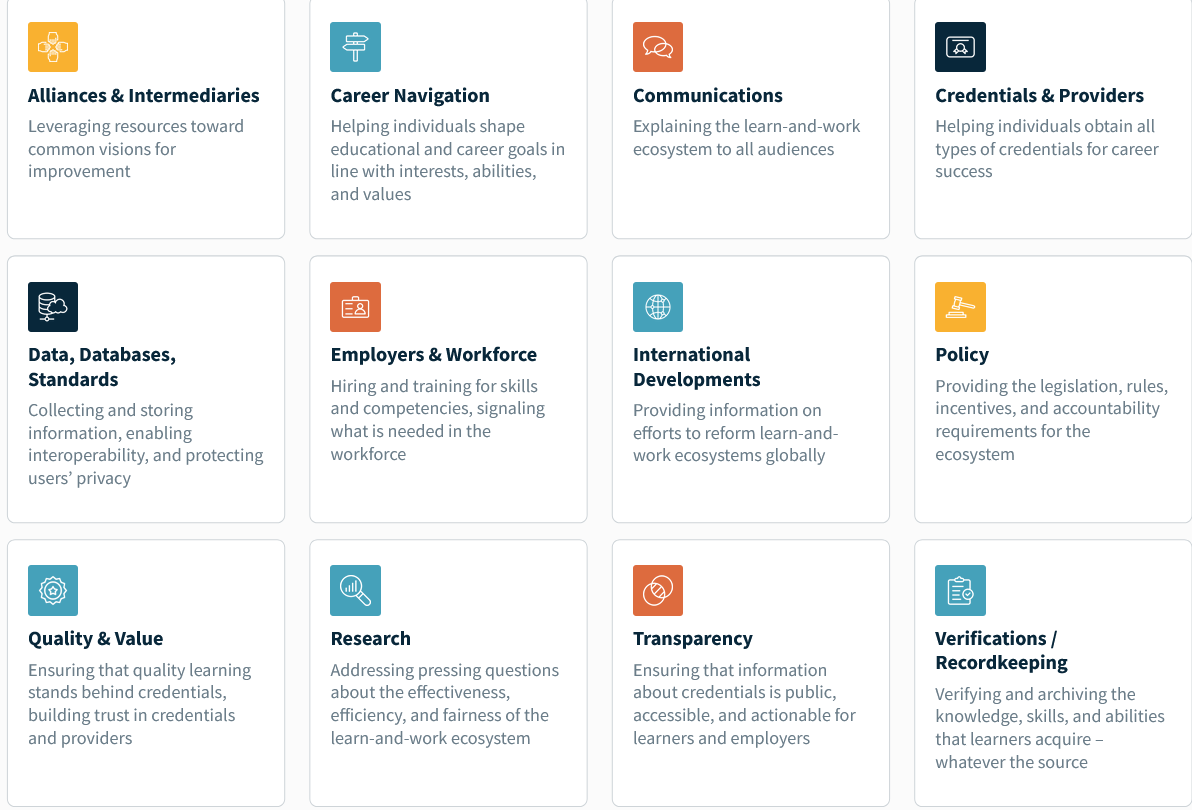You have /5 articles left.
Sign up for a free account or log in.
Interest in how employers find skilled workers and individuals find the jobs they want is arguably at an all-time high. It matters to employers, governments, researchers, unions—and of course to the many educational institutions and training providers increasingly held responsible (and sometimes found wanting) for bridging that gap.
Foundations invest millions in new programs aimed at smoothing the connections between would-be employees and prospective employers. Companies have cropped up to improve the process. The terrain is drawing increasing journalistic coverage. Yet the subject remains murky at best—extremely complex, not well-defined. Some people call it “education and employment,” while others prefer “college to career.”
A new web portal seeks to bring greater attention and understanding to this complicated and often confusing landscape. The website, Learn & Work Ecosystem Library, defines that ecosystem as a connection of “formal and informal learning (education and training) and work … composed of many building blocks” that, when working together, allow individuals to “move more seamlessly through the marketplace using a variety of credentials to communicate the skills and knowledge acquired in multiple settings.”
When the ecosystem functions well, the website’s “about” section notes, it gives employers “more detailed and externally validated information during their hiring and upskilling processes,” helps educational providers “count learning obtained outside of academic settings toward a degree or other credential,” and informs the public. “For the ecosystem to function effectively, all parts of the system must be connected and coordinated.”
Spoiler alert: the parts of the ecosystem often aren’t connected and coordinated, and that’s what motivated the creation of the portal by Holly Zanville, who has spent decades in a variety of academic, government and foundation roles focused on equitable access to higher education and ultimately to the workforce. After 15 years at Lumina Foundation, she is now a research professor and co-director of the Program on Skills, Credentials & Workforce Policy at George Washington University.
“We’re trying to play air traffic controller” between the various constituents, intermediaries and initiatives that work in this space and become a central starting point for information that can then direct people to other experts to dig deeper, says Zanville, for whom the new project is a labor of love.
The site is at this point a prototype that Zanville and her colleague Lucia Weathers hope experts in the field will expand and embrace in the style of wikis.
The portal divides the ecosystem into 12 key components (including credentials and providers, policy, research quality and value—see image at right for the full selection) and provides information about them, as well as about 71 subcomponents. “If any of these aren’t working, things aren’t going well in how the ecosystem is functioning,” Zanville said.
It also has pages about an initial list of 88 programs and initiatives and 118 alliances and intermediaries—organizations, formal and less so, that are operating in this space.
Zanville said she hopes the site will be both a source for credible information and a way to “fuel better collaborations” between those initiatives and organizations.
That will only happen, she said, if two questions are answered affirmatively: “Will people use it, and will they help us keep it updated?”





